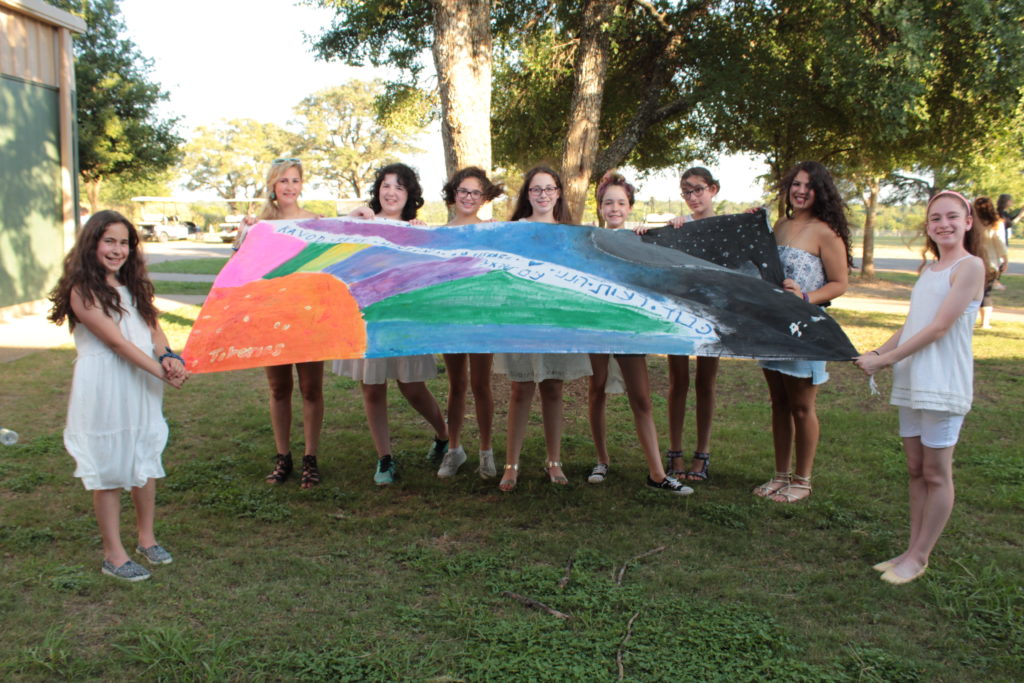Things are really working at Greene Family Camp this year.
Having just completed our first week of camp, I have been witness to an exciting, committed, and deeply devoted community. More than being a mere witness, however, I have been integrated and welcomed as a full member and participant in the culture of Jewish camp life.
As a Jewish educator, I found this innovation to be very exciting. For all the years I have been spending a week of my summer to educate, lead prayer, and teach campers about Judaism, more often than not, visiting faculty can feel like outsiders. Not this year. From the very first day of camp, Rabbi Andrew Terkel paired me with my unit head, Graham Gadd. The staff provided copies of the entire camp schedule to me every day, and encouraged me to spend as much time as possible with the children in the unit. Greene Family Camp even organized “Camp Kattan,” an entire camp within the camp with its own full-time seven member staff for children of faculty and others with its own schedule, programming, and activities.
As a result, I spent much more time this week than ever before building relationships with the children, counselors, and the staff of Greene Family Camp. The camp culture has been redefined to be a place where I have felt more integrated and an important part of the camp community.
The particular unit to which I was assigned included five cabins who were the Shoftim campers. These children are entering their B’nai Mitzvah year in the fall. On the very first full day of camp, we discussed becoming a Bar or Bat Mitzvah and the important Jewish values at camp and home that will be part of their year. We discussed kavod (respect), re’ut (friendship), k’lal yisrael (responsibility toward Jews all over the world), and hineini (being present and in the moment) – the four key Jewish values of camp. We helped the campers create a brit kehilah, a holy covenant, in their cabins in which these values were applied to life at camp.
Without the fresh and innovative intentionality reflected in the camp culture this year, I would not have been able to participate as fully in these experiences. In addition to discussing these values and writing about them, we also helped the children create ritual objects that incorporated these Jewish values. As the first day of camp continued, all the children in the unit created tallitot for their cabins incorporating these values, as well as a mezuzah to hang on their bedposts. When reflecting on the experience of creating a tallit for her cabin, one child remarked that she “didn’t know how everyone’s different ideas and personalities” would be reflected in the tallit. But after seeing it come together, she was “impressed with how it turned out.” Below is a picture of one of the beautiful tallitot created by the Shoftim campers, under which the entire cabin was blessed by their counselors on Shabbat:
Camp is really working this year, and it’s as though I’ve met Greene Family Camp again for the very first time. Singing with the children, going to campouts with them, and of course teaching them, has helped deepen this multi-faceted, dynamic, and immersive Jewish experience. I look forward to many more years of growth, increased learning, and further opportunities to integrate visiting faculty even more with the children, counselors, and staff to make their Jewish camping experience even more dynamic and inspiring. May Greene Family Camp continue to go from strength to strength.
David Scott is the Executive Director and Director of Lifelong Learning at Congregation Beth Israel in Houston, TX. He was faculty for our first week of camp with his wife, Rabbi Adrienne Scott, and their children Ezra and Niviim camper Beryt.

